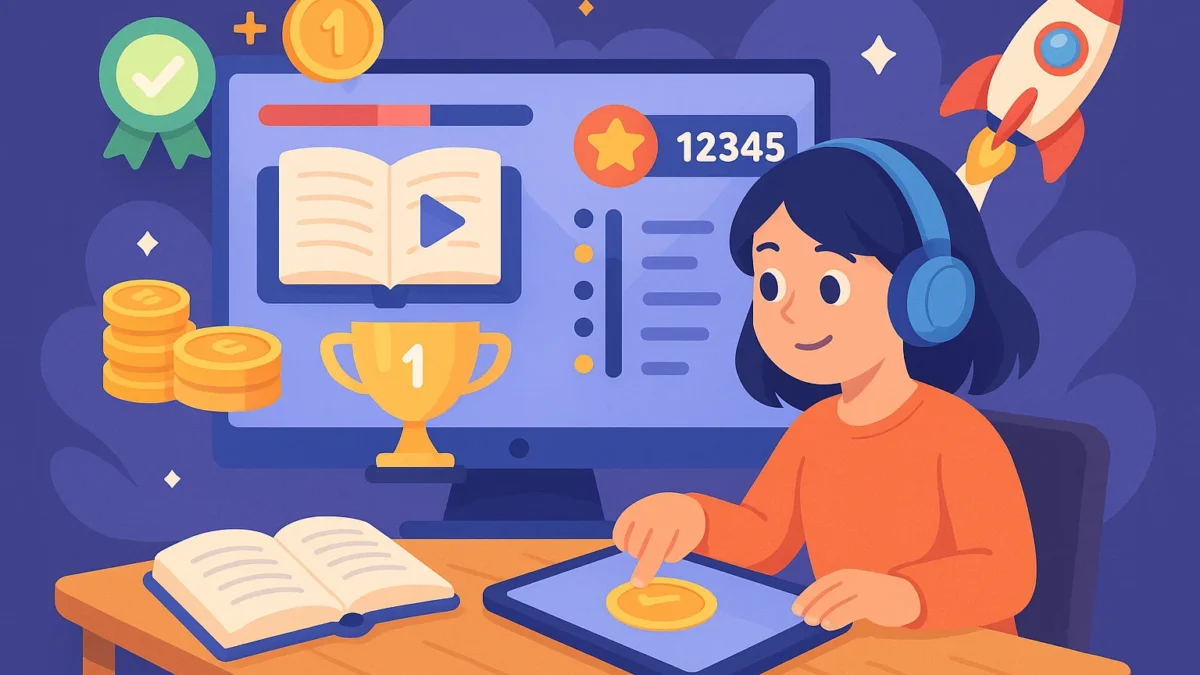Gamification in EdTech: Making Learning Addictive in 2025
Table of Contents
Introduction: Why Gamification is Reshaping Learning
Education has undergone a massive transformation in the past decade. From chalkboards to digital whiteboards, from textbooks to e-learning apps, the way we learn has constantly evolved. In 2025, the biggest game-changer is gamification in EdTech.
By weaving game-like elements into learning environments, educators and platforms are finding ways to make lessons addictive, enjoyable, and highly effective. Students no longer view studying as a boring task but as a challenge they want to conquer.
But what exactly makes gamification in education so powerful? Let’s explore.
You May Also Like: How MedTech Innovations Are Revolutionizing Healthcare in 2025
What is Gamification in EdTech?
Gamification in EdTech is the use of game mechanics such as points, rewards, leaderboards, badges, and challenges in educational platforms to motivate learners. Instead of passively absorbing knowledge, students actively participate, track progress, and celebrate milestones.
Think about how fitness apps reward you with badges for achieving goals. Now, imagine the same concept applied to math, history, or coding. That’s the power of gamified learning.
Core Gamification Elements in Education:
- Points & Scoring Systems – Rewarding learners for completing activities.
- Badges & Achievements – Recognizing milestones and skills.
- Leaderboards & Rankings – Encouraging healthy competition.
- Interactive Quests & Challenges – Making lessons adventurous.
- Progress Tracking – Keeping students motivated by showing growth.
Why Gamification Works in 2025
The popularity of gamification in education is not a coincidence—it’s rooted in human psychology. People love recognition, progress, and rewards. When learning feels like a game, the brain releases dopamine, making the process enjoyable and memorable.
Key Benefits of Gamification in EdTech:
- Boosts Engagement – Lessons feel exciting, keeping learners hooked.
- Enhances Knowledge Retention – Fun, interactive experiences improve memory recall.
- Encourages Healthy Competition – Leaderboards drive learners to push harder.
- Supports Personalized Learning – Adaptive challenges match each student’s pace.
- Builds Motivation & Persistence – Rewards encourage students to keep going.
In 2025, gamified learning is not limited to schools. Universities, corporate training programs, and online learning platforms all use gamification to maximize results.
Emerging Gamification Trends in EdTech (2025)
The future of gamification is evolving rapidly. With advanced technologies and changing learner expectations, EdTech platforms are introducing more sophisticated gamified features.
- AI-Powered Adaptive Gamification: Artificial intelligence customizes game challenges based on individual learning styles and performance. No two learners experience the same journey.
- AR & VR-Based Gamified Learning: Virtual reality classrooms allow students to explore history, science, or engineering in immersive ways, turning lessons into interactive adventures.
- Gamified Corporate Training: Companies use gamification for employee upskilling. Sales teams, for example, compete in simulation games to sharpen their negotiation skills.
- Blockchain Rewards & Credentials: Digital badges and certificates are stored securely on the blockchain, making achievements tamper-proof and globally recognized.
- Collaborative Gamification: Learning is no longer a solo task. Group quests, team projects, and peer-to-peer challenges create community-driven learning experiences.
Real-World Examples of Gamification in EdTech
To understand its impact, let’s look at how leading platforms have successfully integrated gamification:
- Duolingo – Makes language learning addictive with streaks, badges, and leaderboards.
- Kahoot! – Gamified quizzes that make classrooms fun and engaging.
- Classcraft – Turns the classroom into an RPG, where students play roles and complete missions.
- Coursera & Udemy – Offer badges and certificates to keep learners motivated and career-ready.
These platforms prove that gamification isn’t just a gimmick—it’s a sustainable learning strategy.
The Future of Gamified Learning
By 2025, gamification has gone beyond “making learning fun.” It has become a tool for creating positive learning addiction. Students willingly spend more time learning because it feels rewarding, not burdensome.
The integration of AI, AR, and VR will push gamified learning even further. Instead of watching a video about space, students might “travel” through a virtual galaxy, earn points for identifying planets, and unlock badges for completing missions.
The future of education will not feel like studying—it will feel like playing, exploring, and winning.
Conclusion
Gamification in EdTech has transformed education from a passive activity into an engaging, interactive, and addictive experience. By blending technology, psychology, and game design, educators are creating environments where learners are motivated to excel.
Whether you’re a teacher, an institution, or a business, embracing gamified learning strategies in 2025 can dramatically improve engagement and outcomes. The earlier you adopt it, the faster you’ll see results.
Gamification isn’t the future anymore it’s the present of EdTech, and it’s here to stay.
See Also:Content Syndication in 2025: Choosing Platforms That Actually Generate Leads





